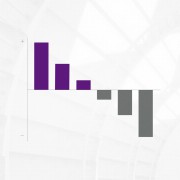Portfolio Construction
 Portfolio Construction Fundamentals
Portfolio Construction Fundamentals
 Investment Portfolio Trends 2023: Looking in the Mirror
Investment Portfolio Trends 2023: Looking in the Mirror
 Does the 60/40 portfolio still work?
Does the 60/40 portfolio still work?
 Opportunity Knocks in International Stocks
Opportunity Knocks in International Stocks
While US stocks are getting all the glory, stocks in the MSCI World Index have also been providing attractive returns – and merit investors’ consideration.
 Five Institutional Trends Dominated in 2H 2023
Five Institutional Trends Dominated in 2H 2023
How E&Fs led in performance, why private debt interest soared, and other institutional portfolio trends are detailed.
 Growth Is Where You Find It: A Look at 2024 Earnings Growth
Growth Is Where You Find It: A Look at 2024 Earnings Growth
Portfolio consultant identifies the sectors and industries most likely to experience earnings growth in 2024. Spoiler alert: US technology still looks good.
 2024 Investment Idea: Quality/Growth
2024 Investment Idea: Quality/Growth
Using our proprietary Cyclicality vs. Inflation framework to align portfolio positioning with our economic outlook – lean in on Quality and Growth.
 Bright Spot: Emerging Market Small Cap Stocks
Bright Spot: Emerging Market Small Cap Stocks
Small emerging market companies have outperformed their large EM counterparts – and the S&P 500® – over the past year.
 Introducing GQI: Natixis Gateway Quality Income ETF
Introducing GQI: Natixis Gateway Quality Income ETF
Learn about this high quality equity ETF that uses an option overlay strategy to deliver a robust monthly distribution.
 The Difference a Day Makes: Leaping into 2024
The Difference a Day Makes: Leaping into 2024
Portfolio consultant offers insight into which tax and investment strategies need to happen before year-end – and others that need to wait for the new year.
 Why We’re (Still) Underweight Securitized Assets
Why We’re (Still) Underweight Securitized Assets
Portfolio consultant compares investments in securitized assets with those in corporate and Treasury securities.
 Portfolio Allocation Trends – Q3 2023
Portfolio Allocation Trends – Q3 2023
A review of nearly 300 advisor portfolios shows that taking equity risk and staying short on fixed income duration drove top year-to-date portfolio returns.
 Don’t Be Shy About Using Model Portfolios
Don’t Be Shy About Using Model Portfolios
Using models can give clients a consistent investment experience and free up more time for advisors to provide high level financial advice.
 Portfolio Construction – What Role Should Fixed Income Play?
Portfolio Construction – What Role Should Fixed Income Play?
Liquidity? Diversification? Income? Portfolio consultants discuss a goals-based approach to align the fixed income allocation with investor objectives.
 Trading Time for Value
Trading Time for Value
How pursuing certain undervalued companies and incorporating factor analysis makes a difference is explained by Vaughan Nelson portfolio managers.
 Fixed Income Yields and Drivers
Fixed Income Yields and Drivers
Portfolio consultants discuss inflation, interest rates and current bond yields, with a focus on the drivers that could push yields lower or higher.
 Baby Steps: 3 Financial Planning Ideas for Expectant Parents
Baby Steps: 3 Financial Planning Ideas for Expectant Parents
Three wealth management ideas for getting your financial (rubber) ducks in a row before the sleepless nights begin.
 Psst… Check Out Small Cap Stocks
Psst… Check Out Small Cap Stocks
Valuations, positive momentum, technical support and a likely soft landing are converging to favor small company stocks over the next few months.
 Credit Where It’s Due
Credit Where It’s Due
Robust US growth, strong corporate balance sheets and persistent consumer spending have helped high yield securities and bank loans outperform this year.
 Portfolio Construction: Growth & Cyclical Stocks
Portfolio Construction: Growth & Cyclical Stocks
Portfolio consultants explain how they align equity investments with their current economic outlook using a growth/cyclical barbell strategy.
 Five Institutional Investment Trends – Midyear 2023
Five Institutional Investment Trends – Midyear 2023
Recovering institutional investor returns, soaring AI company valuations, and reshuffling real estate sectors due to WFH impact are observed at midyear.
 Traditional Diversification Is Working Again
Traditional Diversification Is Working Again
Stocks and bonds stopped moving in tandem in early December – and that favors duration for bond investors.
 Listen to Our Experts Explain the Framework
Listen to Our Experts Explain the Framework
Analysis that combines inflation and growth cycle trends may provide a more nuanced way to understand stock market drivers.
 Observations on Five Institutional Investing Trends
Observations on Five Institutional Investing Trends
Foundations and public pensions lost ground in a challenging investment environment. As we enter 2023, indicators suggest elevated return potential.
 5 Ways to Prepare Your Bond Portfolio for a Recession
5 Ways to Prepare Your Bond Portfolio for a Recession
As rising rates and inflation lead to fears of recession, there are steps investors can take to make fixed income holdings more resilient within their bond portfolios.
 From the Consultants’ Desk: Investment Portfolio Construction Trends at Midyear
From the Consultants’ Desk: Investment Portfolio Construction Trends at Midyear
US equity exceptionalism sentiment, value, shorter durations, and unicorns are among the asset allocation trends explored.
 Portfolio Rebalancing Using Derivatives: Futures Overlays
Portfolio Rebalancing Using Derivatives: Futures Overlays
Research paper explores how synthetic rebalancing using a futures overlay can help manage risk, reduce transaction costs, and minimize taxes.
 Is This a Good Time to Consider Corporate Bonds?
Is This a Good Time to Consider Corporate Bonds?
With yields recently hitting 13-year highs and recession fears growing, are there opportunities in investment grade corporate bonds?
 Institutional Investing Trends Observed at Midyear 2022
Institutional Investing Trends Observed at Midyear 2022
Amid the failed diversification of disappointing returns from both stocks and bonds, there are some bright spots in institutional investing trends.
 Bottoms Up: Finding Sustainable Growth in a Global Value Chain
Bottoms Up: Finding Sustainable Growth in a Global Value Chain
Through a pint of beer, take a look at how Loomis Sayles’ Growth Equity Strategies Team analyzes the beverage industry’s global value chain.
 Using Option Strategies to Help Manage Portfolio Volatility
Using Option Strategies to Help Manage Portfolio Volatility
Learn how option strategies can help manage the volatility of equities and create a smoother ride.
 Inflation Protection: An Equity-Centric View
Inflation Protection: An Equity-Centric View
Historical analysis highlights which equity sectors and strategies fare best when inflation heats up.
 Generate Better After-Tax Returns with Direct Indexing
Generate Better After-Tax Returns with Direct Indexing
Learn why direct indexing with a separately managed account (SMA) is more tax-efficient than an index fund or ETF.
 Direct Indexing Solutions for Tax-Efficient Diversification
Direct Indexing Solutions for Tax-Efficient Diversification
Learn how a direct indexing strategy can help control the tax impact of diversifying a concentrated stock position.
 Tax-Efficient Portfolio Transitions Using Direct Indexing
Tax-Efficient Portfolio Transitions Using Direct Indexing
Discover how direct indexing can help minimize the tax consequences of transitioning portfolio assets to a new account.



